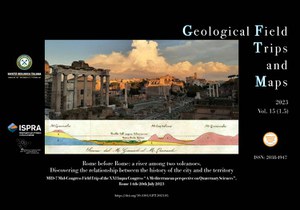Rome before Rome: a river among two volcanoes. Discovering the relationship between the history of the city and the territory
The foundation and growth of Rome have been significantly influenced by the geology and geomorphology of the surrounding area. Various factors, including the morphology of the terrain, characterized by the Tiber River, mid-range capacity springs, a secondary drainage system, and plentiful quarries and raw materials for construction, have had a significant impact on the settlement of the city. This field trip provides an opportunity to follow the geological and geomorphological development of the urban area, which was heavily influenced by two volcanic complexes, the Colli Albani and the Sabatini Mountains, as well as the Tiber River and human activity. The geological and geomorphological characteristics of the surrounding area have played a crucial role in the city's growth and development. Furthermore, the Tiber River has been critical in providing water for agriculture, transportation, and in defence of the city. The rugged terrain created by the volcanic activity provided ample resources for construction, while the abundance of mid-range capacity springs facilitated the colonization of the city. The Colli Albani and Sabatini Mountains volcanic complexes, located to the south and north of Rome, respectively, also had a significant impact on the city's expansion. The volcanism in these regions gave rise to the rugged terrain that encircles the city and offers building raw materials. Over time, the natural landscape has been modified, with the creation of infrastructure, including roads, bridges, and buildings. This field trip provides insight into the geological and geomorphological history of the Rome area and provides an understanding of how these factors influenced the growth and expansion of the city over time.

